Old pictures of Mid Calder
MID-CALDER is a parish and village in the small debt court district of Edinburgh; the parish is bounded north and north-east by Uphall, east by Kirknewton, south and west. by West Calder and north west by Livingstone. The village, pleasantly situated on an eminence between the water of Linnhouse and the river Almond, on the road from Glasgow to Edinburgh, is 12 miles west-south-west from Edinburgh, and 8 east from Whitburn, and has a station about 2 miles distant, on the Edinburgh and Glasgow section of the Caledonian railway. Calder wood, which is of considerable extent, overhangs the village. The soil in the northern district is light, dry and fertile, in the southern the surface undulates towards the Pentland hills. About one third of the entire area of the parish is under tillage ; in the remaining portion there are several beds of rich, bituminous shale, from which a large quantity of paraffin oil and other chemical products are extracted at the different works. Coal abounds in the parish, and on the estate of Calder House, the property of Lord Torphichen. There is an extensive bed of freestone of excellent quality. Fairs are held on the second Tuesday in March, and on the Friday after the second Tuesday in October. The parish church, originally founded by Duncan, Thane of Fife, in the early part of the 13th century, was rebuilt on the ancient site by Peter Sandilands, a scion of the noble family of Torphichen, in 1541, and has since been enlarged and restored at a cost of over £3,000. Calder House is the seat of Lord Torphichen J.P. ; John Knox, in the hall of this mansion, first dispensed the sacrament of the Lord's supper after the Reformation, and his portrait hangs in it. The house of Greenbank, in the vicinity, was the birthplace, in 1565, of John Spottiswoode, Archbishop of Glasgow (1603-15), and of. St. Andrew's (1615). The Earl of Buchan, Lord Torphichen and Lieut.-Col, James Hare J. P. are the principal landowners. Pumpherston is a village in the north of this parish, in connection with the Shale Oil works. The area comprises 12,100 acres; rateable value, £15,029; the population in 1901 was 3,132,including 703 in the village of Mid-Calder, and in the village of Pumpherston, 1,462.
Slater’s Royal National Commercial Directory of Scotland, 1903
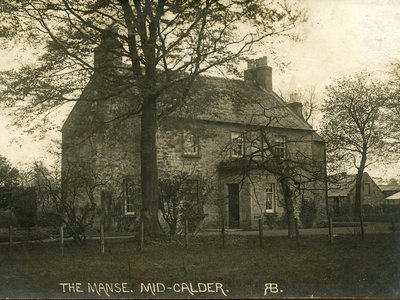
Postcard - 'The Manse, Mid-Calder'
LVSAV2021.119
Postcard - 'The Manse, Mid-Calder' Black and white photographic postcard showing 'The Manse, Mid-Calder'
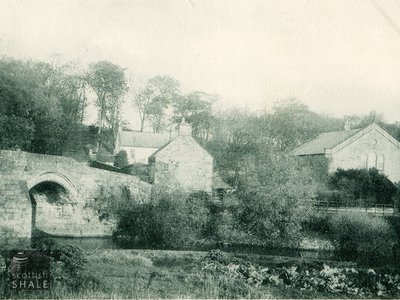
Postcard - "Bridge End, Mid Calder."
LVSAV2013.055
Postcard - "Bridge End, Mid Calder." B&W printed postcard showing Bridge End in Mid Calder.
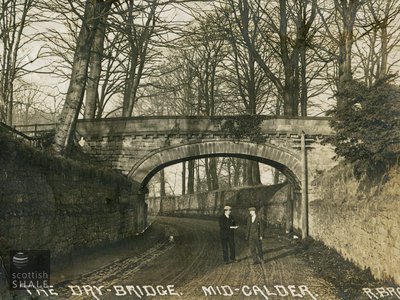
Postcard - "The Dry-Bridge. Mid-Calder."
LVSAV2011.019
Postcard - "The Dry-Bridge. Mid-Calder." Sepia photographic (matt) postcard showing the Dry Bridge in Mid Calder.
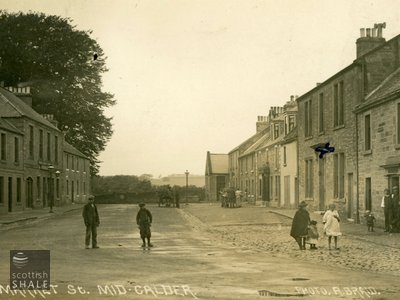
Postcard - "Market St. Mid-Calder"
LVSAV2020.080
Postcard - "Market St. Mid-Calder" B&W photographic postcard, looking north along Market St., with Black Bull Inn on the right.
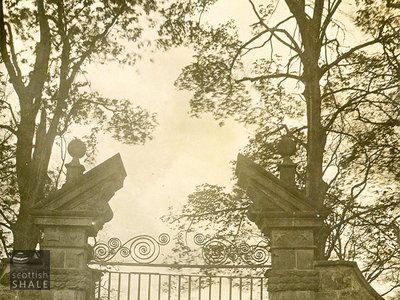
Postcard - "Old gate-way, Calder House"
LVSAV2019.156
Postcard - "Old gate-way, Calder House" B&W photographic postcard showing old entrance to Calder House in Midcalder.
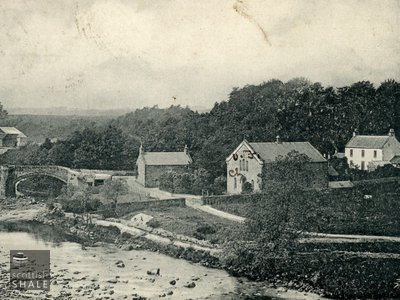
Postcard - "Bridge End, Mid-Calder"
LVSAV2020.004
Postcard - "Bridge End, Mid-Calder" Black and white printed postcard, showing river, bridge and buildings.
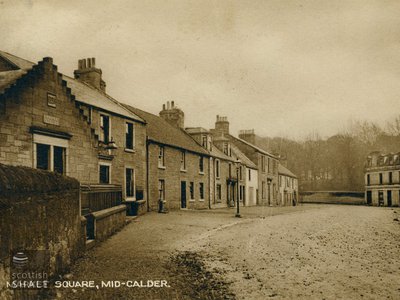
Postcard - "Market Square, Mid Calder"
LVSAV2018.091
Postcard - "Market Square, Mid Calder" Printed sepia postcard showing view south across Market Square, Mid Calder
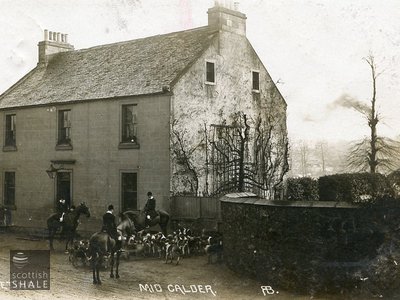
Postcard - "Hunt Meeting, Midcalder"
LVSAV2020.049
Postcard - "Hunt Meeting, Midcalder" B&W photographic postcard showing hunt meeting outside the Torphichen Arms in Midcalder
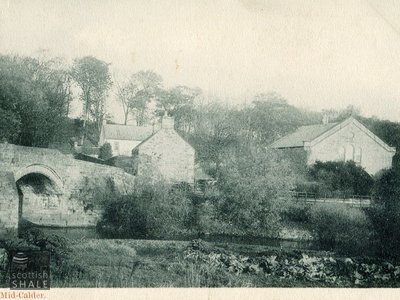
Postcard - "Bridge End, Mid-Calder"
LVSAV2011.081
Postcard - "Bridge End, Mid-Calder" Sepia printed postcard showing the twin-arched stone bridge over the River Almond at Bridge End in Mid Calder.
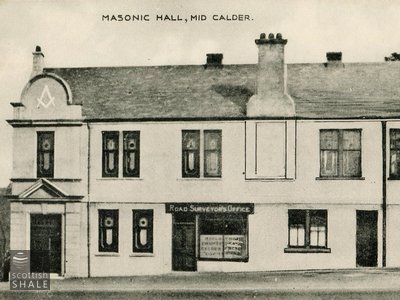
Postcard - "Masonic Hall, Mid Calder"
LVSAV2015.090
Postcard - "Masonic Hall, Mid Calder" B & W printed postcard showing the Masonic Hall in Mid Calder.
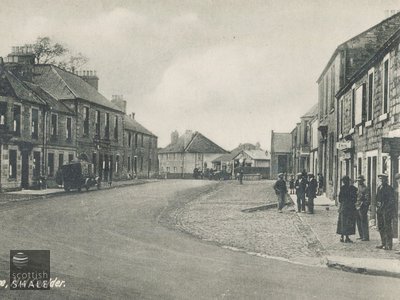
Postcard - "Market Square, Mid Caulder"
LVSAV2015.014
Postcard - "Market Square, Mid Caulder" B & W photographic postcard showing Market Square, Mid Calder.
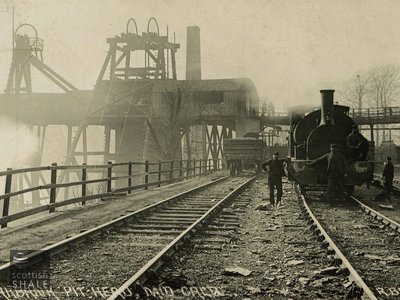
Postcard - “Oakbank Pithead, Mid-Calder”,
LVSAV2011.003
Postcard - “Oakbank Pithead, Mid-Calder”, B&W photographic postcard illustrating pit head surface arrangements with railway tracks, engine and workers. Estimated date c.1905.
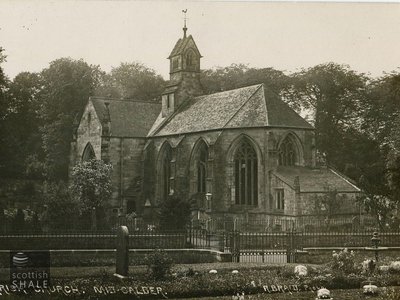
Postcard - "Parish Church, Mid-Calder"
LVSAV2012.018
Postcard - "Parish Church, Mid-Calder" B&W photographic postcard showing the Kirk of Calder, Mid Calder.
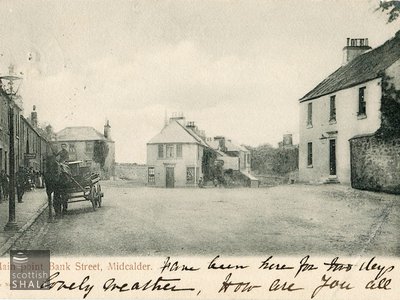
Postcard - "Main point Bank Street, Mid Calder"
LVSAV2016.052
Postcard - "Main point Bank Street, Mid Calder" B&W printed postcard showing Main Point, Bank Street, Mid Calder.
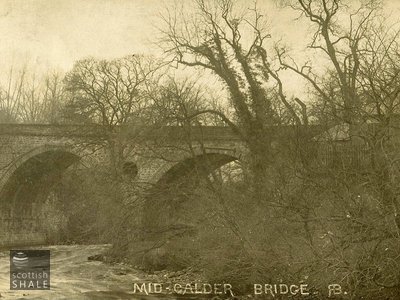
Postcard - "Mid-Calder Bridge"
LVSAV2016.040
Postcard - "Mid-Calder Bridge" B&W photographic postcard showing Mid Calder bridge.
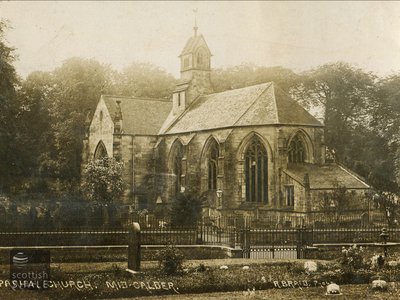
Postcard - "Parish Church, Mid Calder"
LVSAV2014.001
Postcard - "Parish Church, Mid Calder" B & W photographic postcard showing the parish church and graveyard in Mid Calder
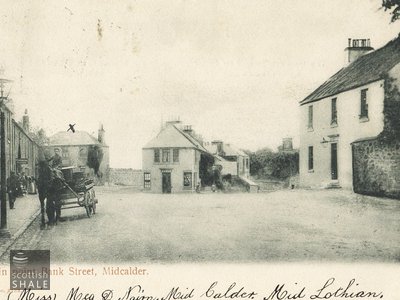
Postcard - "Main point, Bank St. Midcalder"
LVSAV2017.084
Postcard - "Main point, Bank St. Midcalder" B&W printed postcard with view along Bank St
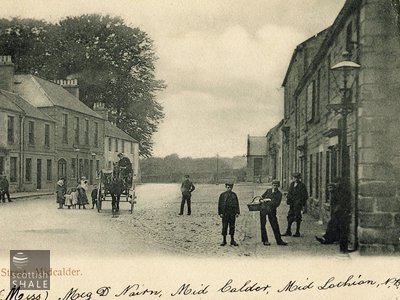
Postcard - "Market St. Midalder"
LVSAV2017.085
Postcard - "Market St. Midalder" B&W printed postcard showing view along Market St. Midcalder
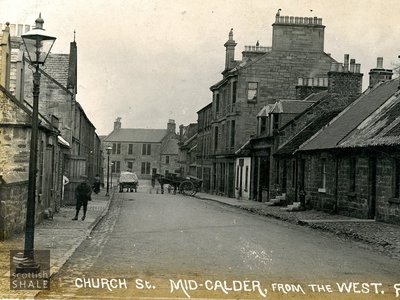
Photo - "Church St, Mid Calder"
LVSAV2017.086
Photo - "Church St, Mid Calder" B&W photographic postcard showing the view east along Church St. Midcalder
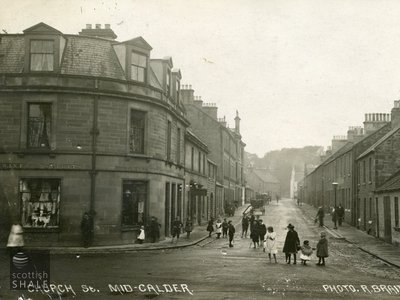
Postcard - "Church St. Mid-Calder"
LVSAV2017.110
Postcard - "Church St. Mid-Calder" B & W photographic postcard showing Church Street in Mid Calder
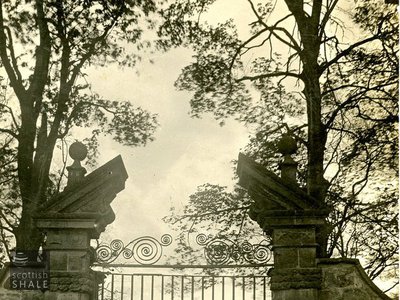
Postcard - "Old Gate-Way, Calder-House"
LVSAV2016.050
Postcard - "Old Gate-Way, Calder-House" B&W photographic postcard of the 'Old gate-way. Calder-House'.